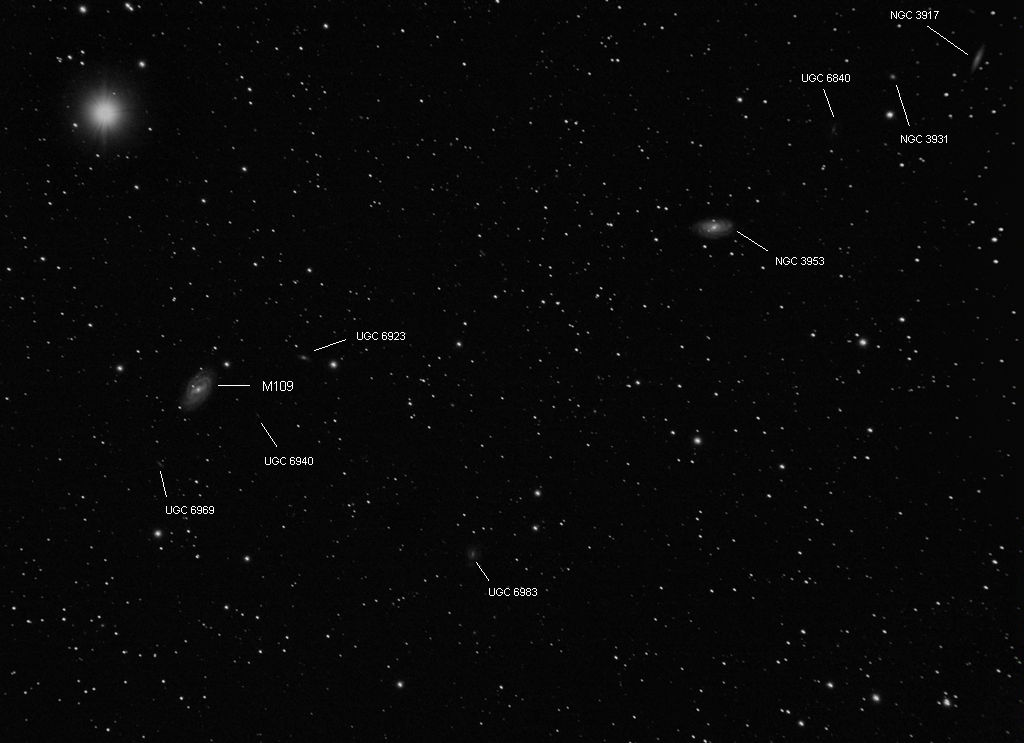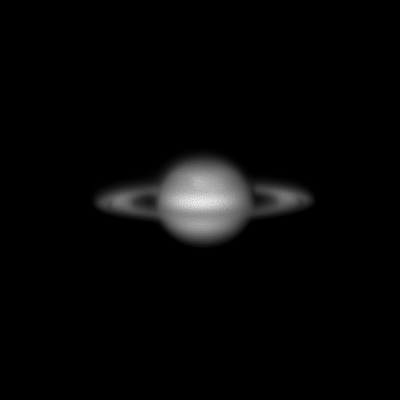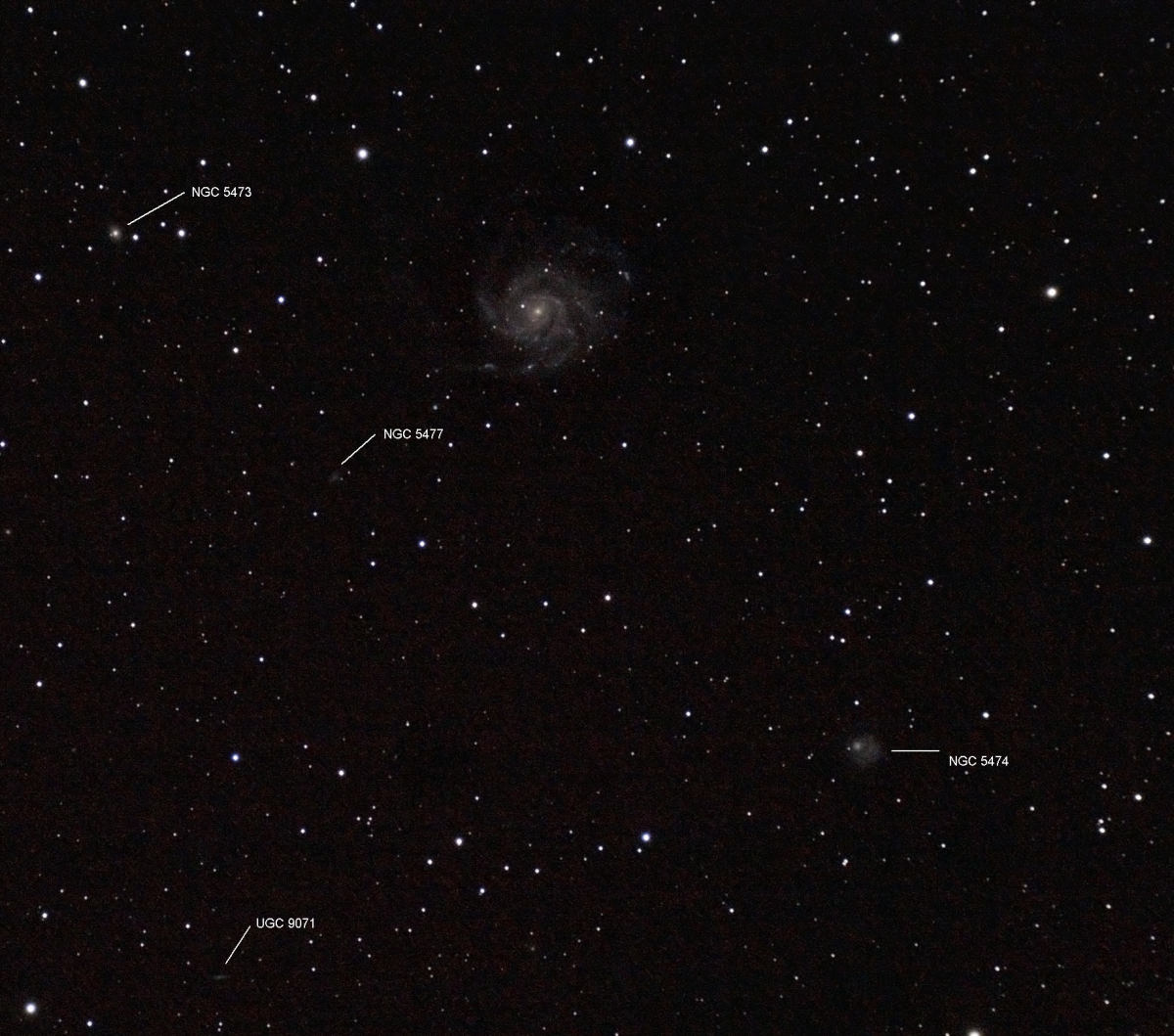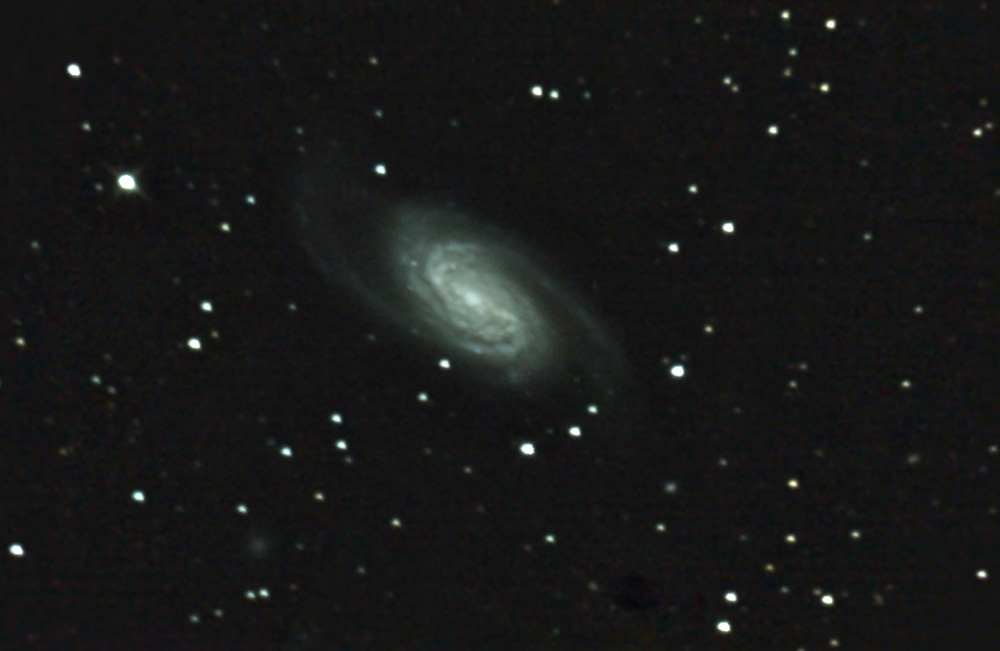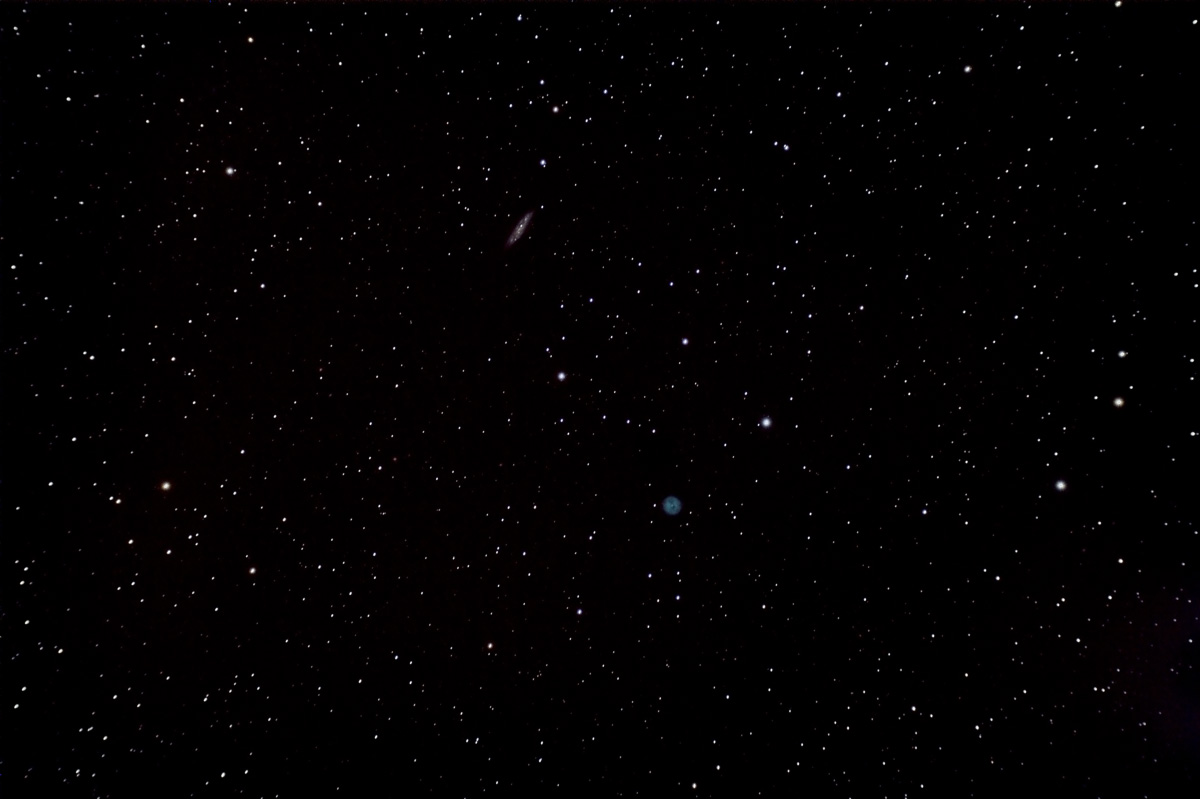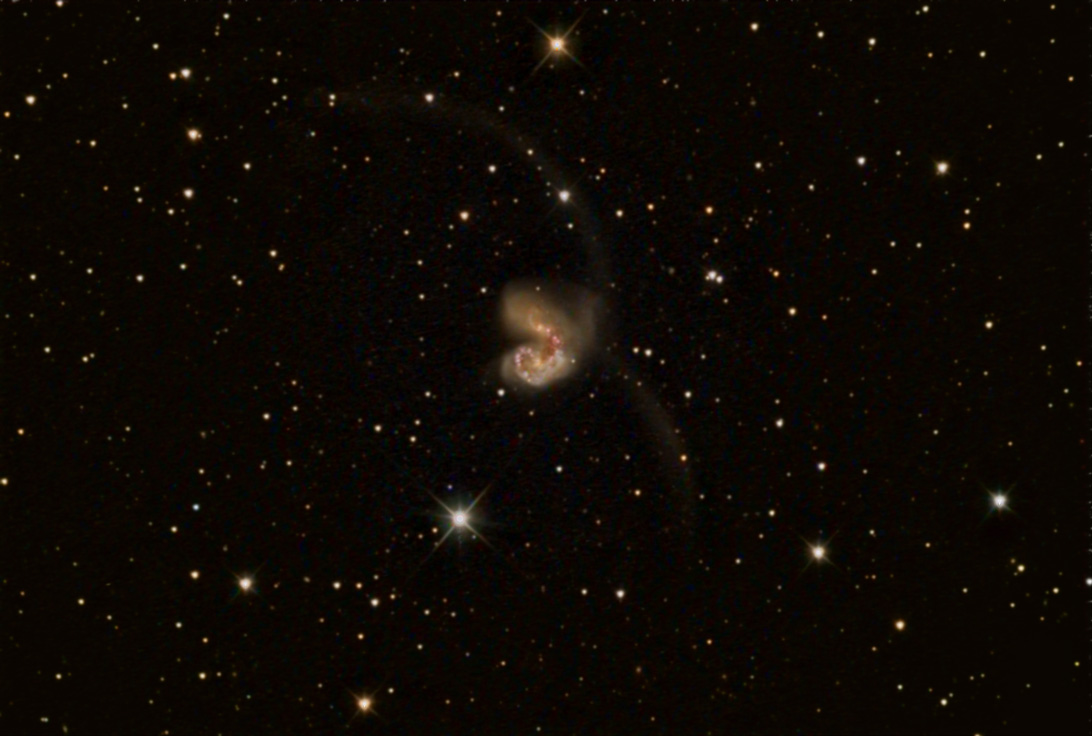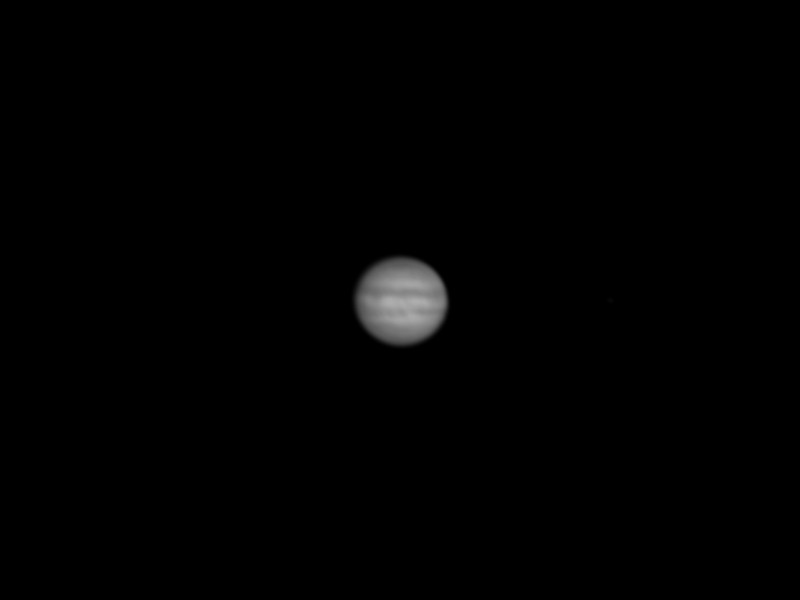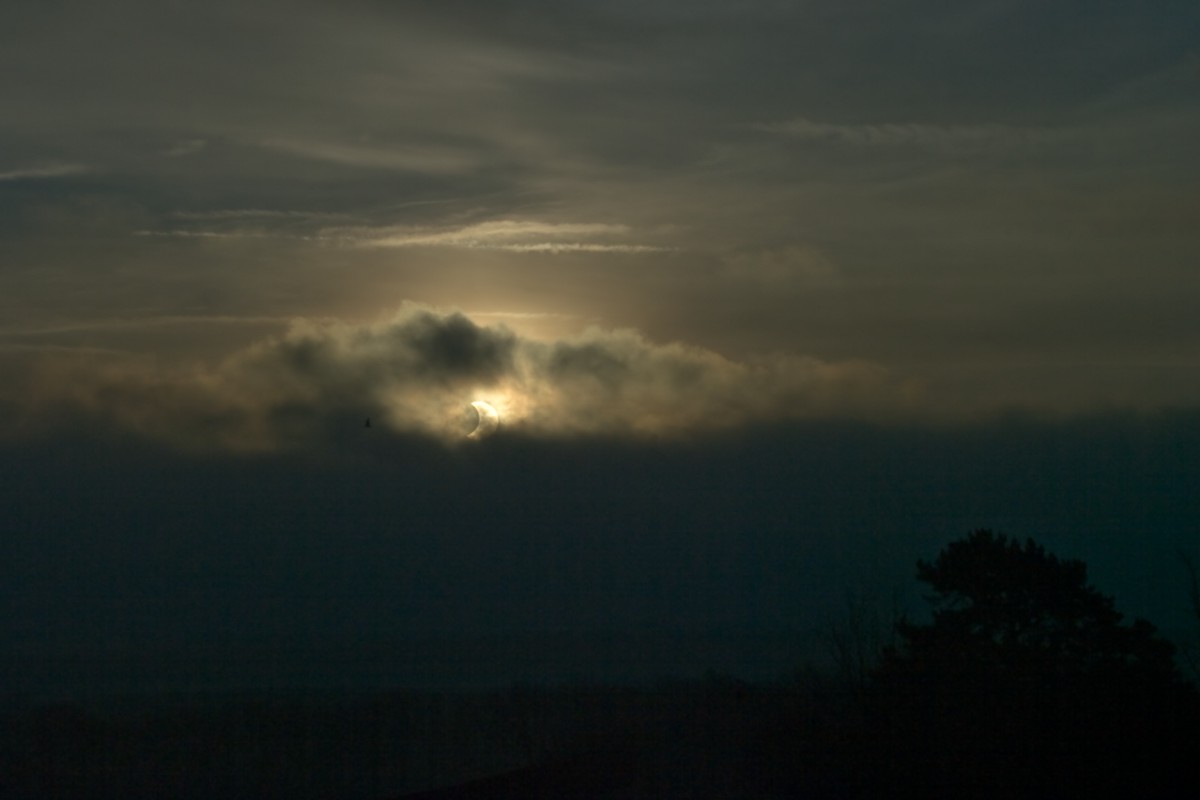Joan Genebriera of AstroPalma kindly pointed out that there is a large white spot on my last image of Saturn. This is the giant storm that’s been raging since the end of last year so I’m quite pleased to have captured it. There’s a Hubble picture of the storm here:
http://planetary.org/image/saturn_JBNY02SQQ_hubble_20110312.png
Author: admin
After an abortive effort to find NGC 2403 in Camelopardalis (it’s very difficult to locate things when there are no bright stars in the vicinity and you’re lying on your back peering through a reflex sight) I switched to M109 in Ursa Major. This is conveniently located next to gamma UMa (Phad). The sky conditions were superb and a 5 minute test exposure showed little trailing so I went ahead and shot 1.5 hours worth at ISO 800 with the Canon 350D.
This was the first time I’d attempted 5 minute exposures on the Astrotrac at a focal length of 420mm using just the polar scope but it worked very well. If I’d had more time then it would have benefited from a drift alignment but that’s still a whole new learning curve.
Looking at the resulting image in Aladin I identified galaxies down to mag 16 (UGC 6840) and some MGC galaxies as faint as mag 17 although I haven’t included these on the image here. Not too bad for a 70mm refractor.
Saturn
With a bright full moon in the sky Dan and I decided to spend the night trying to better understand the society’s 20″ reflector. Getting the best out of it is definitely an art rather than science and the longer you spend with it the better you get to know it’s strange quirks and foibles.
After some time with the Orion nebula I put the webcam on with Televue x2.5 and took some 10fps videos of Saturn. The final one looked the best on the laptop so I stacked 400 of the best frames in Registax and applied a lot of sharpening.
The rings have noticibly opened since last year and as it climbs higher in the sky it should present a nice target later in the year.
Before the clouds rolled in on Thursday night I was experimenting with some techniques for polar aligning my Astrotrac and finished off with 6 2 minute exposures of M101 in Ursa Major. One of the nice things about wide field photography is that you never know what else is going to turn up in the picture and this whole area is rich in galaxies and I’ve annotated the picture with the names of the brightest.
Telescope: ZenithStar 70
Camera: Canon 350D
Exposure: 6x 2 minute
At the front of Leo is the bright barred spiral galaxy, NGC 2903. Dan Self has recently produced an image using the 20″ (http://farawaythings.blogspot.com/2011/02/lions-head-galaxy.html) but I decided on the slightly different approach of using longer 3 minute ISO 800 exposures. Thin high cloud caused some problems with the auto-guider and I found myself using 5 second guide exposures which is a little long for this telescope. This has resulted in rather poor shaped stars.
The longer exposures have helped to reveal the faint arms of the galaxy and the fainter background galaxies but there’s a lot more noise in this picture as a result of only gathering 11 frames. The next opportunity I will try and increase my collection to see what improvements this will bring.
One of the advantages of using a small telescope for photography is that you can get wide fields of view that help put objects within their true context. The two main objects in this picture are M97, the Owl nebula and M108. Originally I planned to use a cropped version of this picture but after some consideration I decided that the wider field was the better presentation.
M97 is the intra-galactic object at only 4140 light years distance. Despite it’s diminutive size (only 170″), it is still about 3 light years across. First observed by Mechain in 1781 Messier added it to his catalogue in march of that year.
M108 is rather further away at 46 million light years and is a member of the Ursa Major group of galaxies. The bright object near the centre is not the galaxy core but a foreground star in our own galaxy. While this galaxy was observed by Messier at the same time as M97 it was not added to his catalogue at the time and is a 20th century addition.
19 3 minute sub frames, ISO 800
Canon 350D
Zenithstar 70
Skywatcher field flattener
If there’s one thing I’ve learnt about image processing, it’s that there always something else to learn. On occasion, it’s worthwhile going back to some older images to see if they can be reprocessed to better effect. My original post on NGC 4038 was here: http://blog.andrewluck.me.uk/2009/02/28/the-antennae-galaxies. The widefield image suffered a lot from colour noise and this was due to the dark frames used not removing some of the brighter pixels and overcompensating for others resulting in black dots on the luminance frames and colour spots on the RGB frames.
When re-processing, I only calibrated the colour images, relying on the stacking process to average out the noise on the luminance. Then I manully removed the brightest colour dots which remained. Once the combine had been done I used GradientXterminator to remove a lot of the background noise.
Jupiter in Infra-red
A rare clear interval on Tuesday evening at the observatory and I put my modified webcam on the 20? with a narrowband infra-red filter. The seeing wasn’t up to much but I got some pictures both with and without a x2 barlow.
The southern cloud band that so dramatically disappeared last year is back although in this image it does appear to have a gap in it where it’s still obscured by higher level clouds.
Always a favourite target for winter imaging, it’s hard to be disappointed with the results. With the first clear night in a long time I was keen to try out my new 10-20mm Sigma zoom. The field size with this lens is immense and this is a crop of just the Orion area from a stack of 10 3 minute exposures at f/4.
The Sunday night was also clear so I setup the 70mm on the Astrotrac. I didn’t spend quite long enough on the polar alignment so some trailing was visible even with fairly short exposures. To avoid clipping the trapezium I reduced the exposures to 2 minutes and reduced the ISO to 400.
Solar eclipse (part 2)
Having had time to sort through the pictures, I like this one rather better. I really underestimated just how bright the sun would be at this low altitude, but this one has less distracting flare. For the next time a solar filter will be a must.
So, this is ISO 100, 1/200 second at f/32. For later pictures I used 1/4000. The bright sun really messed up the auto white balance and gave the entire picture an orange glow. I’ve rebalanced this image towards the blue so the colours are closer to what I actually saw.
